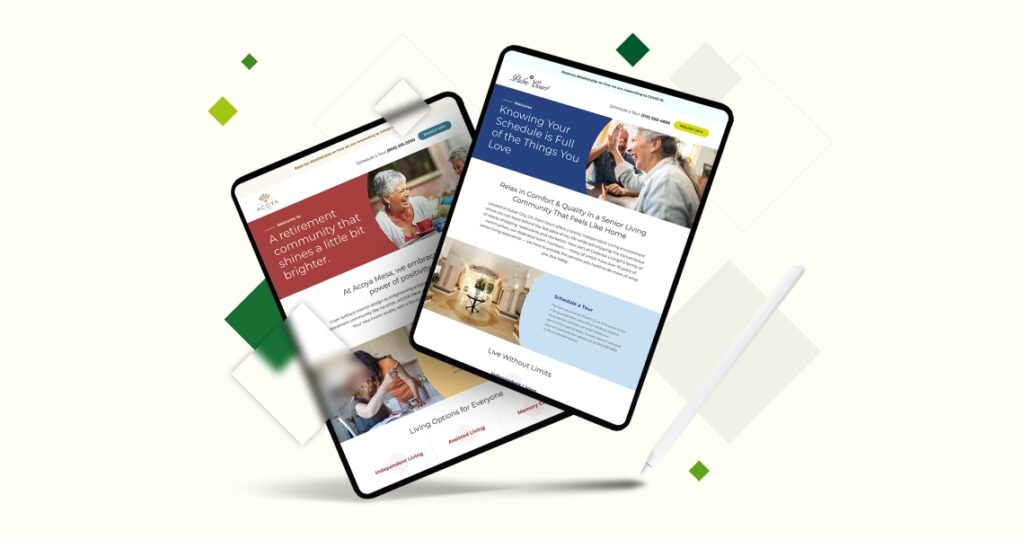
The best SEO strategies are those that can stand the test of time — and by time, we of course mean the ever-changing Google algorithm. Google consistently updates its platform to best serve searchers around the world – helping us all find the most relevant and interesting information as quickly and accurately as possible.
In the recent past, Google’s algorithm (which relies on over 200 factors) looked at individual or unique sets of keywords as a primary determinant of page topic orientation, which was of course a contributing factor to the ultimate ranking determination in their search results. In this most recent update, dubbed the Helpful Content Update, Google seeks to prioritize user content and intent rather than singular keywords or sets of keywords. In short, they are putting user intent where it should be, in the driver’s seat.
So why does this matter?
The short of it is this: in its ever-evolving effort to put search users first. Google is cracking down on content that doesn’t deliver excellent user value – both from AI-created content and content that’s written specifically for search engine rankings. Google’s move seeks to prioritize user-first content and the quality of that content thus influences the ranking of the page which houses said content.
The goal is to minimize the frequency with which users are disappointed by Google’s recommended results, and the associated content of those results. This means that publishing content that’s relevant to your business, valuable to the user, timely, original, and authoritative is a major key to competitive rankings for specific search queries, and thus organic search traffic.
The good news is that while the scrubbing of invaluable content will likely hurt many websites rankings and search intent, Agital has always advocated for original, high-quality content as part of our SEO strategy.

Every user has a reason to be on Google (or any other search engine), which is known as a user’s search intent—or user intent for short. We often look at four primary search intent categories:
Google already ranks your content based on these queries and the Helpful Content Update won’t change that. In fact, it emphasizes it.
For example, let’s say you have an in-depth blog post that lists the five best running shoes for women, and that post currently ranks on Google’s second page for a particular keyword query in Google. Your competition, which is blocking you from holding a position on the first page, is a well-optimized sales page for a single pair of running shoes.
The Helpful Content Update may allow your blog to overtake your competitor’s because it covers more search intent. Your blog is:
In contrast, your competitor’s site is strictly transactional. While it’s helpful for users who only want to buy shoes, your blog has a broader user intent and thus is relevant and useful to a wider swath of searches.
Understanding user intent is one thing, but you can’t do anything with that knowledge until you know how to identify it. There are four main areas you can look at to identify user intent.
You know your audience best, therefore, you know what they may be looking for and what they want to see when they enter your website. Catering to your audience is one of the best ways to create user-first content.
Google is clever and often pulls out key information that it thinks a user will want to know. If you’ve seen news feeds, a box filled with tweets, or the “People Also Ask” section appear in your SERP, then you’ve come across SERP Features. These are fantastic resources — especially the People Also Ask feature — to find out what users are searching for and how they’re using Google.
Though SEO best practices are focusing less and less on keywords, they are still a goldmine of information. Keyword research tells you exactly how many people are searching for specific terms and phrases, and what the competition is like. On top of that, keywords are still the primary way of knowing what users are searching for and how they are searching for it. For example, keyword research would show you that it’s more common to say “pop” in the mid-west when referring to carbonated drinks, while those from the east or west coast might say “soda”.
This information is extremely important when you’re creating any kind of content because it allows you to directly address user-intent and to relate to your audience on a deeper level while using the exact words that they would use.
Finally, if you don’t know where to start, look at Google’s Autocomplete predictions. It will provide you with a list of real search queries that can springboard your content creation and SEO strategies.
Google provided a list of questions that can help you discover if you’re writing user-first content. You can find the full list of questions here, though we’ll cover a few of them below.
Ask yourself the following:
If you answered “yes” to these, then you’re likely creating user-first content already. If you answered no, look over your blogs and website to see how you can improve. It’s important to note that it’s not enough to just make user-focused content. If you want to rank higher in SERPs, then you need to adapt a few more SEO best practices as well.

Back in the olden days of SEO, search engines rewarded keyword stuffing and spamming short-form content. That’s no longer the case.
For blog posts, it’s better to provide weekly high-quality and unique content that’s over 750 words, than to write daily 350-word blog posts. Consider the user-intent behind these two questions: which running shoes are best for high arches, and what running shoes are waterproof. The first topic opens the door to address a larger range of queries, such as explaining the pros and cons to different running shoes, while the second is more limited and will likely result in a simple list of shoes that are waterproof.
For webpages, stick to relevant and high-level topics, such as your products and services, and fill those pages with high-quality information that a user may want to know.
However, unlike blogs, webpages are more fluid when it comes to best practices. This is because user-intent can be vastly different between the two. You should evaluate every page on your website to help you create high-quality content that matches user intent.
For example, the user intent on a product page for a women’s running shoe will be vastly different than the user intent on a service page that sells insurance. The product page may only need 300 words that outlines what makes the shoes great, who it’s for, and any specialized information like if they are waterproof. To contrast, the service page for an insurance policy may need to go more in-depth to address questions about coverage, cost, qualifications, and to compare plans.
The sum of it though, no matter if you’re writing a blog or content for a webpage, is this: high-quality content that serves a singular purpose will always perform better.
You should still employ general SEO practices, though they should be secondary and supplemental to search intent.
Your primary keyword should appear in the:
Your secondary keywords should appear in the body text, headers, your meta description, and alt text as well.
Don’t forget to add internal and external links. Links provide a more in-depth experience for your readers. They lead to complementary or related information that doesn’t duplicate the information, which adds additional layers of meaning and context.
This update means you should look at how, when, and why you produce content. In general, remember that your content and SEO strategies should be future proof. If you work with an agency, such as Agital , work with them to ensure their strategies utilize the core Google principle of useful, timely, original content to produce content that will always be valuable.
But how will it affect your content right now? If your content is primarily based on serving Google and search engines, then you’ll likely see a drop in your rankings. If your existing content was created for addressing user needs, then you’ll likely experience either no change, or your rankings will improve.
This is great news for Agital clients, as we prioritize user experience, user intent, and high-quality content in every one of our strategies. For us, the user has always been king.
If you want your content to crown your users, reach out to experience how seamless, user-focused, and future-proof SEO can be.
